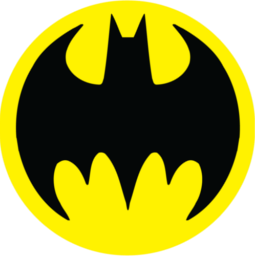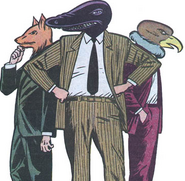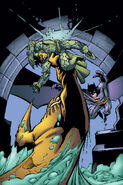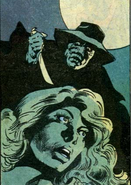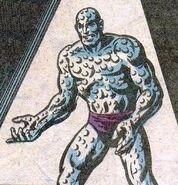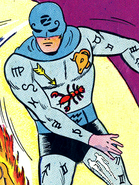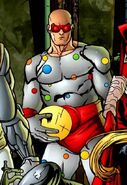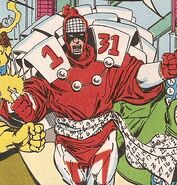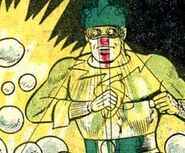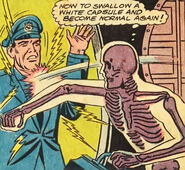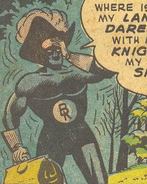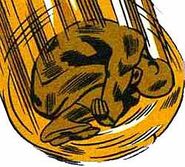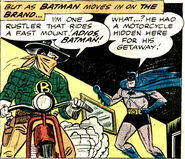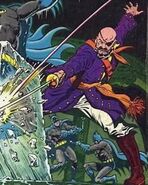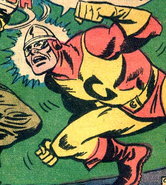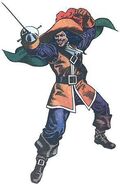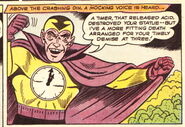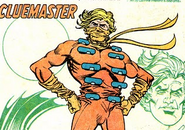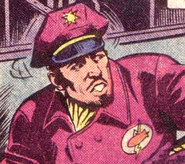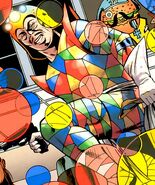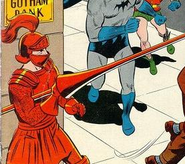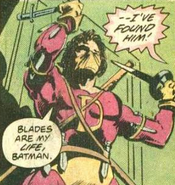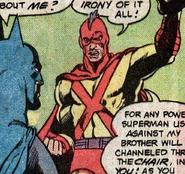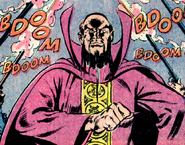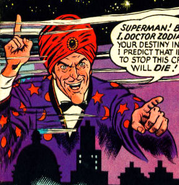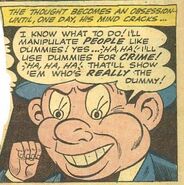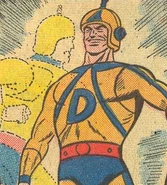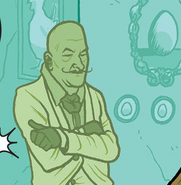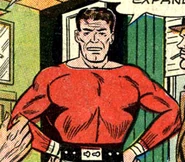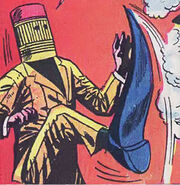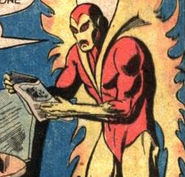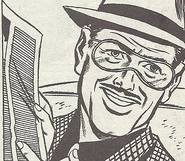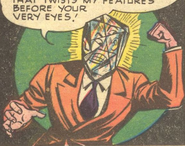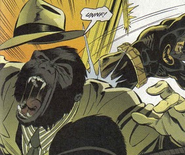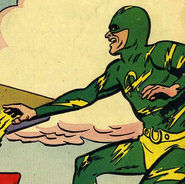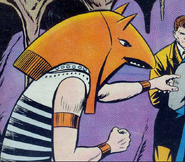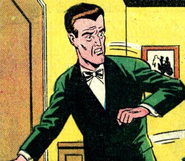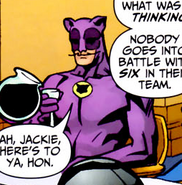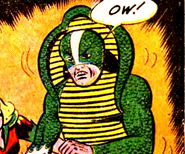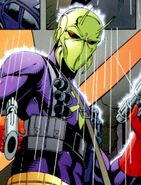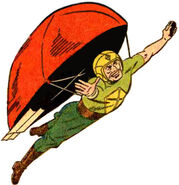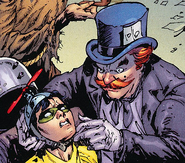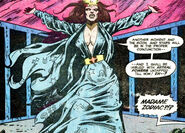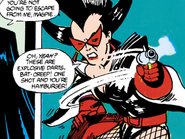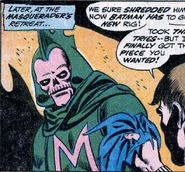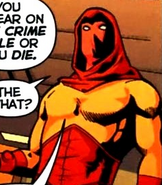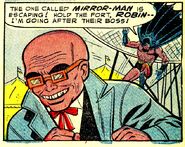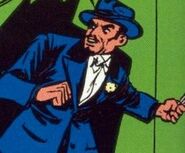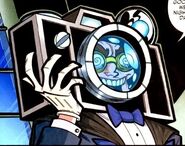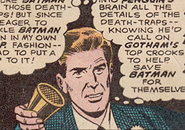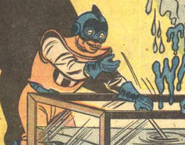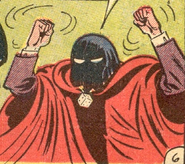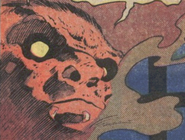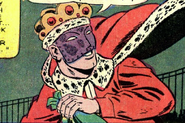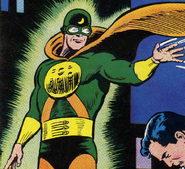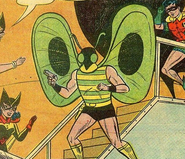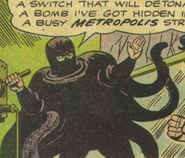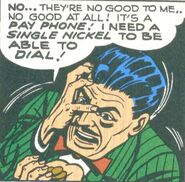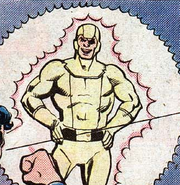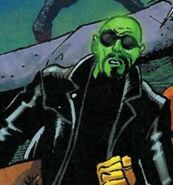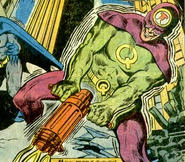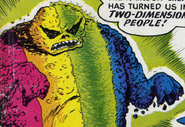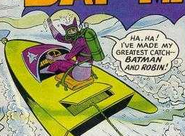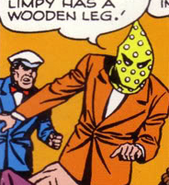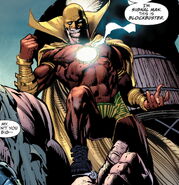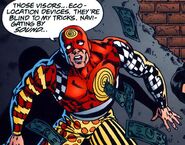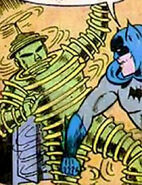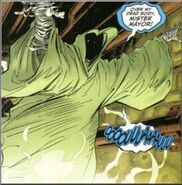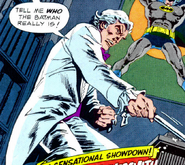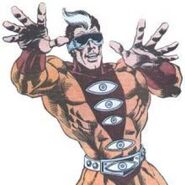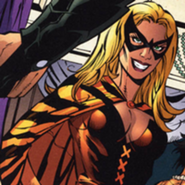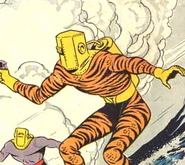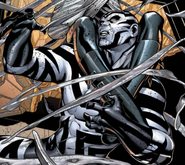- "When I started as Batman, the various "rogues" committed grandiose yet harmless crimes just to see if I'd notice. They weren't criminals so much as egocentric personalities in need of attention. A nuisance, at worst. The media made stars of these headcases. The dailies pulped whole forests just to supply the volume of paper needed to track their exploits. They were painted as outsiders and dreamers who dared to be fabulous against the urban criminal landscape. And everyone thought they were "a real hoot"."
- ―Bruce Wayne[1]

Bureau of Missing Villains header.
Batman's Bureau of Missing Villains was a series of case files maintained by Batman on so-called "missing villains", minor criminals whom he'd fought and defeated early in his career but had since vanished into obscurity. The files were first published as part of the short-lived Batman Family mini-series which ran from 1975 to 1978.
Many of the missing villains had either retired, died, or were simply incarcerated for an extended period; however, a few such as Matthew Hagen and Basil Karlo, the first and second Clayfaces, did return to Gotham City at a later point and face Batman again.
Resurgence[]
It is unclear if Batman still maintains a "Bureau of Missing Villains" dossier, as several of the original villains mentioned in the original case files have since made a resurgence. However, occasionally he does make specific reference to a "bygone era" of largely inactive Golden and Silver Age costumed criminals. These rogues were characterised by harmless petty crimes in the main and the colorful sensationalism surrounding their exploits. According to Batman, most of them became minor celebrities as a result of their bizarre and impractical crime sprees. Their fame quickly diminished with the onset of major crimes being committed by the Joker, the Penguin, and a new generation of darker, more lethal supervillains.
The "bygone era" villains recalled most prominently by Batman included Kite Man, Killer Moth, Cavalier, and others.[1]
Calendar Man, Firefly, and Catman are examples of "bygone era" villains which have been re-imagined and are now considered major characters in their own right.
Ambush Bug: Year None[]
The phenomenon of missing Batman villains was parodied in Ambush Bug: Year None, which depicts most minor rogues from Gotham City being banished to an extraterrestrial prison where Batman hides "embarrassments" from his past. Inmates of this facility included the Polka-Dot Man and Composite Superman.[2]
Original Bureau of Missing Villains[]
"Bygone Era" Villains[]
Notes and trivia[]
- Various members of the bureau were reintroduced as more notable threats and engaging antagonists:
- Basil Karlo's Clayface has become the mainstream version of the character and one of Batman's most prominent villains, being a tragic actor turned disfigured mud monster.
- Calendar Man was reimagined in Batman: The Long Halloween and Batman: Dark Victory as a Hannibal Lecter inspired criminal-mastermind who negotiates with Batman with his knowledge on Gotham's ongoings.
- Cluemaster was reintroduced as the estranged villain of Bat family member Stephanie Brown AKA Spoiler (previously Batgirl and Robin). After his defeats at the Dark Knight's hands, he became self-aware of his gimmick and various other patterns in Gotham which he exploits to orchestrate calculated attacks against the Bat family.
- Crazy Quilt was reimagined in Batman: Endgame as the deranged scientist Dr. Paul Dekker, a geneticist who used to work for Wayne Enterprises alongside Hugo Strange and Doctor Death. Dekker was obsessed with immortality, "Quilting" life in abnormal ways to get the attention of Batman as he believed him to be an immortal too while studying Ra's al Ghul, Vandal Savage and an immortality chemical called Dionesium.
- Killer Moth was made into an insane black-sheep of Gotham's criminal-underworld with a need to validate and establish himself. He frequently teams up with Firefly, founds super-villain groups such as the Misfits, and became the cannibalistic moth monster, "Charaxes".
- Kite-Man was used in the controversial Tom King run of Batman as one of its central villains and recurring characters, the run ending with his off-screen reform and apparent friendship with Bruce Wayne. He was given the catchphrase of, "Kite-Man! Hell yeah!" and origin of a criminal inventor whose son died from a kite-accident, in a gang-war between the Joker and the Riddler.
- The Outsider was made into an evil alternate-universe Alfred Pennyworth who serves Batman's Earth 3 counterpart, Owlman.
- Polka-Dot Man was popularized outside of the comics by James Gunn's film The Suicide Squad in the DC Extended Universe. Here, Abner Krill's mother was a STAR Labs scientist who exposed her children to an inter-dimensional virus that killed his siblings and made Abner into a mentally-ill meta-human being constantly consumed by his alien illness that he needs to expel as polka-dot like destructive blasts or else he'll die.
- Ten-Eyed Man has been used as a creepy assassin connected to a nomadic tribe called the Ten-Eyed Men and styled similarly to the horrific Pale Man from Pan's Labyrinth (2006) in Arkham City: The Order of the World.
- Tiger Moth along with her accomplices Silken Spider and Dragon Fly were made into members of the League of Assassins.
- Tiger Shark was reimagined in Batman: Black Mirror as a dangerous mobster, smuggler and pirate in Gotham's waters with ties to the Court of Owls. He is obsessed with animal cruelty, dressing in exotic animal skins while smuggling endangered species to use, torture and kill; even going to far as to put a bounty on Killer Croc for his pelt.
